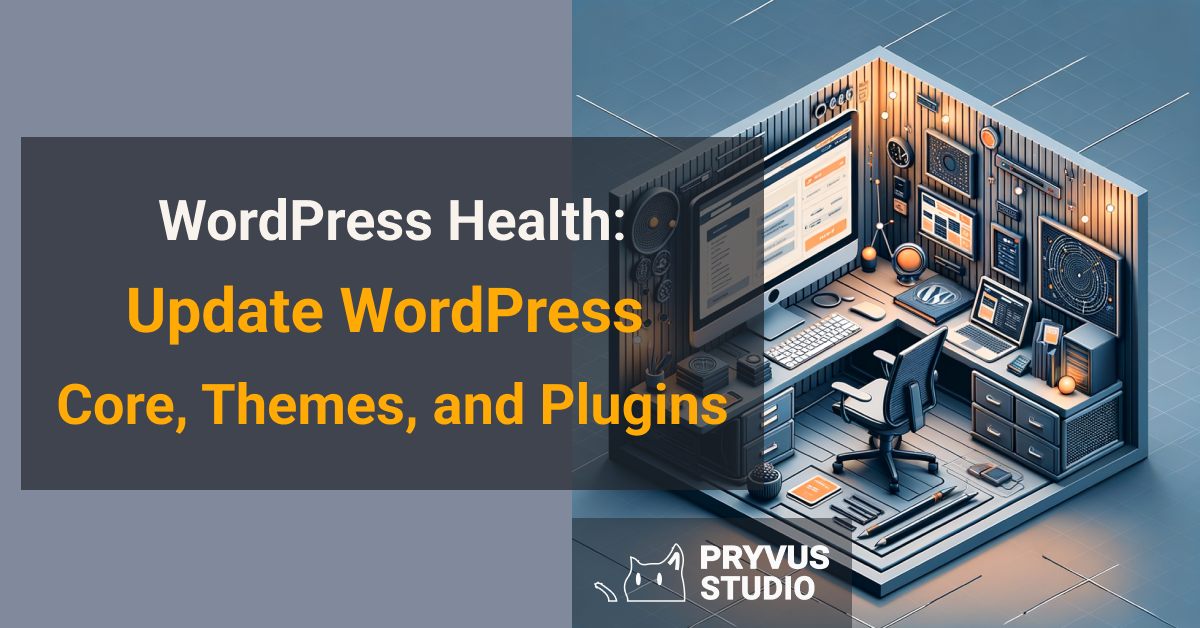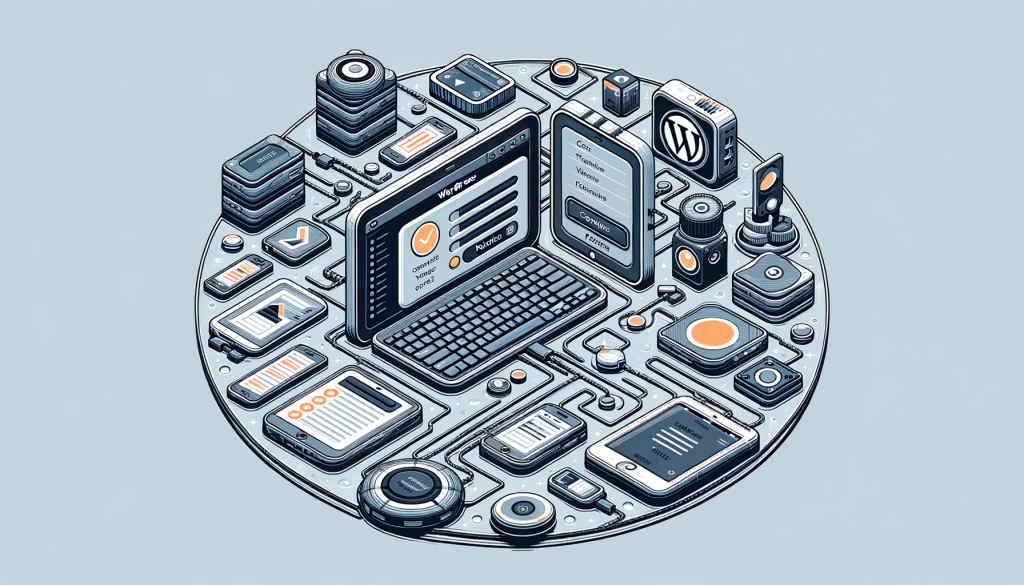Notice: Only variables should be passed by reference in /home/ploi/pryvus.com/public/wp-content/themes/pryvus/template-parts/content-post.php on line 12

Maintaining a WordPress site is crucial for its health.
Regular updates are essential for security, performance, and introducing new features. Ignoring them can leave your site vulnerable. Pryvus Studio highlights the importance of professional support in navigating these updates.
In this article, you will learn:
- Why updates are vital for your site
- How to update WordPress safely
- The role of professional support in maintenance
Understanding the Importance of Regular Updates
Let’s face it, keeping your WordPress site updated might seem like a chore. But, did you know it’s crucial for the health of your site? Regular updates can significantly reduce security risks, improve performance, and add new features.
First off, security is a big deal. Most WordPress updates patch vulnerabilities. Without these updates, you’re an easy target for hackers. Next, performance improvements. Updates often come with optimizations that make your site run smoother and faster. Lastly, who doesn’t love new features? Updates can bring fresh, innovative functionalities to your site.
Pryvus Studio, with its deep dive into custom software development, has seen firsthand the difference updates make. We’ve helped clients enhance their site’s security, performance, and features through diligent updates.
Updating WordPress core, themes, and plugins is not just a recommendation; it’s a necessity for maintaining a healthy, secure, and efficient website. Let’s dive deeper into why these updates are so vital.
How to Safely Update WordPress Core, Themes, and Plugins
Updating your WordPress site is a bit like giving it a health check. It’s vital, but it needs to be done right. Let’s dive into how you can safely update your site’s core, themes, and plugins without breaking a sweat.
The key to safe updates is preparation and testing.

First off, always back up your site. Think of it as an insurance policy for your website. There are plenty of plugins that can do this for you. Once you’ve got your backup, it’s testing time.
Create a staging site – a clone of your live site. This is where you can test updates without affecting your real site. If something goes wrong, no sweat. Your live site is untouched.
Next, update the WordPress core. Always check the official WordPress site for the latest version. After the core, move on to themes and plugins. Update them one at a time. This way, if there’s an issue, you’ll know exactly which update caused it.
Now, let’s talk about automatic updates. They’re convenient, sure. But they might not always be the best choice for every site. Evaluate your sites needs and decide if you want to enable them.
After updates, test your site thoroughly. Check for any broken links, pages, or functionality. If all looks good, push the updates from your staging site to your live site.
But what if something goes wrong? First, don’t panic. Rollback to your previous version using the backup you made. Then, try to identify the problem. Sometimes, it might be a compatibility issue that requires a simple fix.
Lastly, keep a log of all updates. This record-keeping is a lifesaver when troubleshooting issues.
Remember, regular updates are non-negotiable for a healthy, secure WordPress site. But they dont have to be a headache. With the right approach, you can update your site smoothly and keep it running at its best.
If you’re feeling unsure, professional help is always a good idea. Pryvus Studio has vast experience in maintaining and updating WordPress sites. We can ensure your site stays up-to-date, secure, and performing at its peak.
Common Pitfalls in WordPress Updates and How to Avoid Them
Updating WordPress core, themes, and plugins is a must-do for keeping your site secure and running smoothly. However, it’s not always a walk in the park. There are common pitfalls that can trip you up if you’re not careful.
Knowing the common pitfalls in WordPress updates can help you avoid them and keep your site in top shape.
First off, not testing updates before applying them to your live site can lead to unexpected issues. Always use a staging environment to test updates. This simple step can save you from headaches later on.
Forgetting to backup your site before making updates is another common mistake. A recent backup can be a lifesaver if something goes wrong during the update process.
Ignoring compatibility issues between your WordPress version and plugins or themes can cause your site to break. Make sure everything is compatible before proceeding with updates.
Another pitfall is not updating regularly. This leaves your site vulnerable to security threats and performance issues. Set a schedule for regular updates to avoid this.
Finally, overlooking post-update checks is a mistake. After updating, always check your site for any issues. This includes testing all functionalities to ensure everything works as expected.
To sum up, avoiding these pitfalls involves testing updates, backing up your site, ensuring compatibility, updating regularly, and conducting post-update checks. Following these steps will help you maintain a healthy and secure WordPress site.
For those who find this process daunting, seeking professional support, like that offered by Pryvus Studio, can be a wise choice. Their expertise in WordPress maintenance can help streamline the update process and keep your site running smoothly.
Enhancing Your Site’s Security and Performance Post-Update
Once you’ve updated WordPress core, themes, and plugins, it’s time to boost your site’s security and performance. This step is vital to ensure your website runs smoothly and remains safe from threats.
Post-update, enhancing security and performance is key to a healthy WordPress site.

First, review your site’s security settings. Check if all security plugins are updated and configured properly. Consider adding a web application firewall (WAF) for added protection.
Next, focus on performance. Use tools to measure site speed. Optimize images, enable caching, and minify CSS and JavaScript files. These steps significantly reduce load times.
Regularly scan your site for malware. Use reliable security plugins and services for this. Remember, early detection is crucial to prevent damage.
Finally, keep an eye on site analytics. Monitor traffic and user behavior. Adjustments based on data can further enhance site performance and security.
While these steps are manageable, professional support like Pryvus Studio’s can simplify maintenance, ensuring your WordPress site remains secure, fast, and reliable.
The Role of Professional Support in WordPress Maintenance
Let’s face it, maintaining a WordPress site can be a handful. But, it doesn’t have to be a solo journey. Professional support, like Pryvus Studio, can be a game-changer.
Why? Well, here are a few reasons:
- Expertise on Tap. They’ve seen it all and fixed it all.
- Time-Saving. Focus on what you do best, let them handle the rest.
- Peace of Mind. Sleep easy knowing your site’s in good hands.
Think of professional support as your site’s guardian angel. They’re there to ensure everything runs smoothly, from updates to security. Plus, they offer tailored advice to boost your site’s performance.
So, ready to take your WordPress maintenance to the next level? Pryvus Studio is just a call away. Partner with them, and watch your site thrive.
Remember, in the digital world, staying updated isn’t just nice it’s necessary. And with the right support, it’s a breeze.


